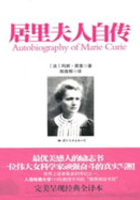
第11章 婚后生活 (4)
In the vacation we went on longer outings by means of our bicycles. In this way we covered much ground in Auvergne and in the Cevennes and visited several regions at the seashore. We took a great delight in these long all-day excursions, arriving at night always in a new place. If we stayed in one place too long, my husband began to wish to get back to the laboratory. It is also in vacation time that we visited once my family in the Carpathian mountains. My husband learned some Polish in view of this journey to Poland.
But first of all in our life was our scientific work. My husband gave much care to the preparation of his courses, and I gave him some assistance in this, which, at the time, helped me in my education. However, most of our time was devoted to our laboratory researches.
My husband did not then have a private laboratory. He could, to some extent, use the laboratory of the school for his own work, but found more freedom by installing himself in some unused corner of the Physics School building. I thus learned from his example that one could work happily even in very insufficient quarters. At this time my husband was occupied with researches on crystals, while I undertook an investigation of the magnetic properties of steel. This work was completed and published in .
In that same year the birth of our first daughter brought a great change in our life. A few weeks later my husband's mother died and his father came to live with us. We took a small house with a garden at the border of Paris and continued to occupy this house as long as my husband lived.
It became a serious problem how to take care of our little Irene and of our home without giving up my scientific work. Such a renunciation would have been very painful to me, and my husband would not even think of it; he used to say that he had got a wife made expressly for him to share all his preoccupations. Neither of us would contemplate abandoning what was so precious to both.
Of course we had to have a servant, but I personally saw to all the details of the child's care. While I was in the laboratory, she was in the care of her grandfather, who loved her tenderly and whose own life was made brighter by her. So the close union of our family enabled me to meet my obligations. Things were particularly difficult only in case of more exceptional events, such as a child's illness, when sleepless nights interrupted the normal course of life.
It can be easily understood that there was no place in our life for worldly relations. We saw but a few friends, scientific workers, like ourselves, with whom we talked in our home or in our garden, while I did some sewing for my little girl. We also maintained affectionate relations with my husband's brother and his family. But I was separated from all my relatives, as my sister had left Paris with her husband to live in Poland.
It was under this mode of quiet living, organized according to our desires, that we achieved the great work of our lives, work begun about the end of and lasting for many years.
I had decided on a theme for my doctorate. My attention had been drawn to the interesting experiments of Henri Becquerel on the salts of the rare metal uranium. Becquerel had shown that by placing some uranium salt on a photographic plate, covered with black paper, the plate would be affected as if light had fallen on it. The effect is produced by special rays which are emitted by the uranium salt and are different from ordinary luminous rays as they can pass through black paper. Becquerel also showed that these rays can discharge an electroscope. He at first thought that the uranium rays were produced as a result of exposing the uranium salt to light, but experiment showed that salts kept for several months in the dark continued the peculiar rays.
My husband and I were much excited by this new phenomenon, and I resolved to undertake the special study of it. It seemed to me that the first thing to do was to measure the phenomenon with precision. In this I decided to use that property of the rays which enabled them to discharge an electroscope. However, instead of the usual electroscope, I used a more perfect apparatus. One of the models of the apparatus used by me for these first measurements is now in the College of Physicians and Surgeons in Philadelphia.
I was not long in obtaining interesting results. My determinations showed that the emission of the rays is an atomic property of the uranium, whatever the physical or chemical conditions of the salt were. Any substance containing uranium is as much more active in emitting rays, as it contains more of this element.
I then thought to find out if there were other substances possessing this remarkable property of uranium, and soon found that substances containing thorium behaved in a similar way, and that this behavior depended similarly on an atomic property of thorium. I was now about to undertake a detailed study of the uranium and thorium rays when I discovered a new interesting fact.